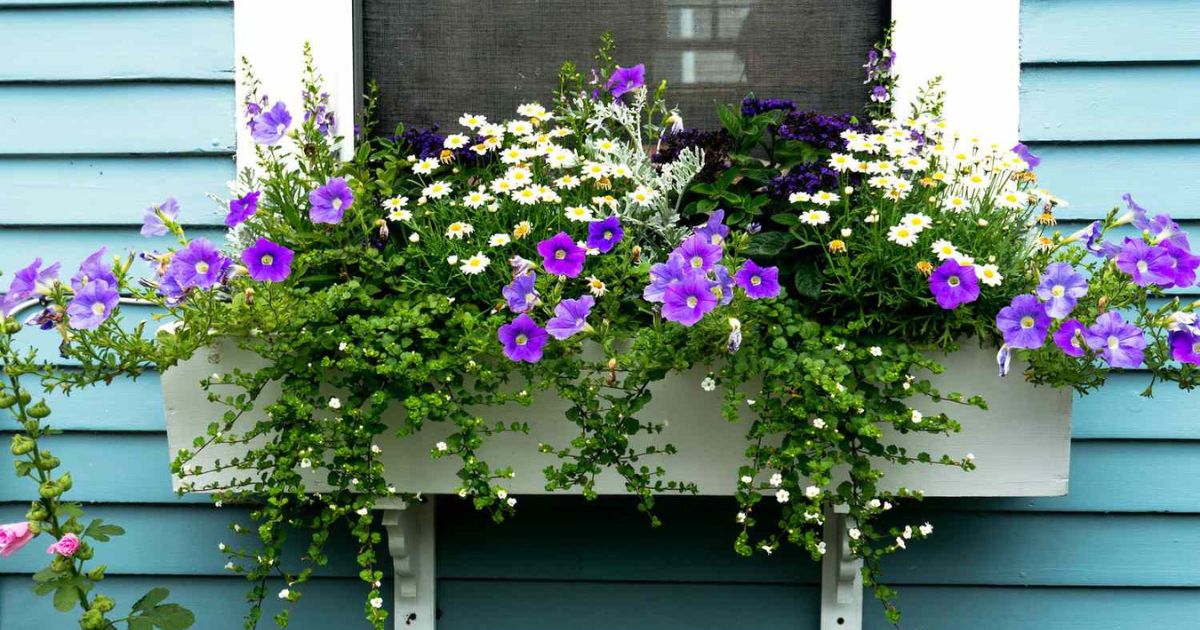Window boxes are the perfect way to bring life, color, and curb appeal to your home. Whether you’re in a city apartment or a country cottage, a well-planted window box adds charm and character, often becoming the first thing people notice. But to truly make your window box shine, choosing the right flowers is essential. You want blooms that are vibrant, easy to maintain, and suited to the light conditions of your window. In this guide, we’ll explore the best flowers for window boxes, including sun-loving favorites, shade-tolerant beauties, trailing stunners, and tips on how to arrange and care for best flowers for window box them.
Importance of Window Boxes for Curb Appeal and Personal Enjoyment
Window boxes are a simple yet powerful way to elevate the charm and personality of any home. Strategically placed beneath windows, these flower-filled containers add instant color, texture, and life to a property’s exterior, significantly boosting curb appeal. Whether you’re looking to impress passersby, enhance your home’s resale value, or brighten your street view, window boxes deliver beauty in a compact space. They offer a dynamic, seasonal opportunity for creativity, allowing you to change flowers and plants throughout the year to match the mood or season. Beyond aesthetics, window boxes also bring joy and tranquility to everyday good flowers for window boxes life.
A glance out the window reveals vibrant blooms, fluttering butterflies, or fragrant herbs, creating a personal connection with nature. For apartment dwellers or urban homeowners, they provide a valuable green space. Overall, window boxes combine decorative flair with emotional fulfillment, enriching both the home and the what plant attracts hummingbirds heart.
Why flower choice matters: light, color, maintenance, and style
Choosing the right flowers is essential for creating a beautiful and thriving garden or arrangement. Light requirements vary—some flowers need full sun, while others thrive in shade—so matching plants to your environment ensures healthy growth. Color influences mood and complements your space’s aesthetic, making the right palette crucial. Maintenance levels vary; some flowers require frequent care, while others are low-maintenance, making them suitable for various lifestyles. Lastly, style matters to achieve the desired look, whether it’s classic, modern, or wildflower-inspired. Thoughtful flower choice balances these factors, resulting in vibrant, lasting blooms that enhance your space best flowers for flower boxes plant boxes for windows beautifully.
Choosing the Right Flowers for Window Boxes
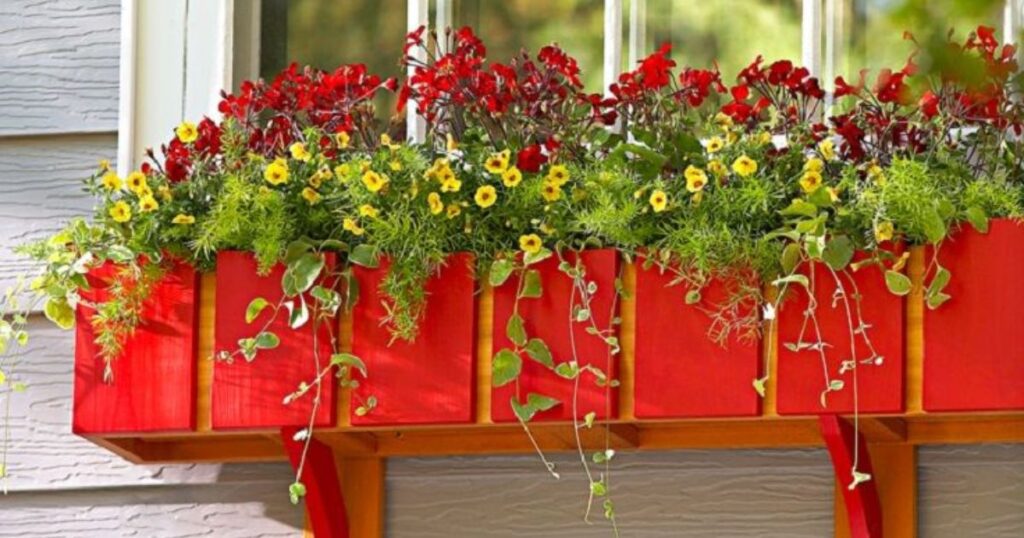 Choosing the right flowers for window boxes can transform your home’s exterior with vibrant color and charming appeal. Consider factors such as sunlight exposure, climate, and maintenance needs when selecting blooms that will thrive. Opt for a mix of trailing plants, such as ivy or petunias, to soften the edges, and upright flowers, like geraniums or marigolds, for height and color contrast. Choose varieties with staggered blooming times to keep your window boxes lively throughout the season. By selecting the perfect combination, you’ll create eye-catching displays that brighten your windows and enhance your outdoor space, flower boxes for windows effortlessly.
Choosing the right flowers for window boxes can transform your home’s exterior with vibrant color and charming appeal. Consider factors such as sunlight exposure, climate, and maintenance needs when selecting blooms that will thrive. Opt for a mix of trailing plants, such as ivy or petunias, to soften the edges, and upright flowers, like geraniums or marigolds, for height and color contrast. Choose varieties with staggered blooming times to keep your window boxes lively throughout the season. By selecting the perfect combination, you’ll create eye-catching displays that brighten your windows and enhance your outdoor space, flower boxes for windows effortlessly.
Why Window Boxes Are Perfect for Flowers
Window boxes are the perfect home for flowers because they bring vibrant color and life to any space, even where ground planting isn’t possible. These compact planters fit beautifully on windowsills, adding charm and curb appeal to both indoor and outdoor settings. They allow gardeners to enjoy fresh blooms up close and personalize their living areas with ease. Window boxes maximize limited space, making them ideal for apartments, balconies, or small gardens. They also create a natural frame for flowers, enhancing the beauty of blossoms and foliage while attracting pollinators, such as bees and butterflies. With proper care, window boxes provide a continuous burst of color and fragrance, window flower box flowers brightening moods and transforming ordinary windows into inviting focal zinnia flower points.
Top 10 Best Flowers for Window Boxes
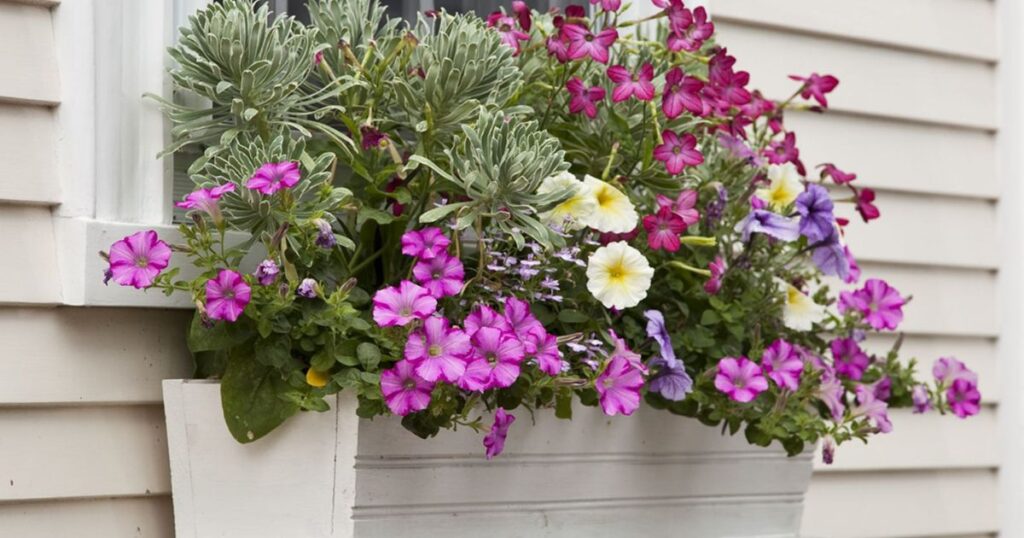 Window boxes add vibrant charm and curb appeal to any home, and choosing the right flowers can make all the difference. The top 10 best flowers for window boxes combine beauty, durability, and ease of care, ensuring your outdoor space stays colorful throughout the seasons. From classic petunias and cheerful geraniums to fragrant sweet peas and elegant begonias, these blooms thrive in compact spaces, bringing life to your window box flowers windowsill.
Window boxes add vibrant charm and curb appeal to any home, and choosing the right flowers can make all the difference. The top 10 best flowers for window boxes combine beauty, durability, and ease of care, ensuring your outdoor space stays colorful throughout the seasons. From classic petunias and cheerful geraniums to fragrant sweet peas and elegant begonias, these blooms thrive in compact spaces, bringing life to your window box flowers windowsill.
Whether you want bright, bold colors or soft pastels, these flowers attract pollinators like bees and butterflies, adding natural movement and energy. Perfect for both sunny and partially shaded locations, these top picks offer year-round enjoyment and elevate your home’s exterior with effortless floral appeal.
Petunias: The Classic Choice
- Light Needs: Full sun
- Bloom Time: Spring through frost
- Why They Shine: Petunias offer bold, trumpet-shaped flowers in nearly every color, from bright pinks to deep purples.
- Petunias are the most popular window box flowers for a reason. They bloom continuously, handle heat well, and cascade beautifully over the edges of containers. For a fuller look, choose wave or trailing petunias, and keep them blooming by deadheading spent blooms.
- Pair with: Verbena, trailing lobelia, or sweet alyssum for a colorful cascade.
Geraniums: Timeless and Tough
- Light Needs: Full sun to partial shade
- Bloom Time: Spring to late fall
- Why They Shine: Geraniums bring bold blooms and thick foliage, with excellent drought resistance.
- Zonal geraniums are a classic for their upright form and large, rounded flower clusters. Ivy geraniums trail more, making them ideal for creating cascading effects. They thrive in sunny spots and require only moderate care, making them suitable for beginner gardeners.
- Pair with: Bacopa or trailing vines, such as sweet potato vine.
Begonias: Bright for Shade or Sun
- Light Needs: Partial to full shade
- Bloom Time: Late spring to frost
- Why They Shine: These versatile blooms can thrive where sun-lovers falter.
- Begonias—especially wax and tuberous types—are perfect for shaded window boxes. Their flowers are long-lasting and come in a variety of colors, including white, red, pink, and orange. Bonus: their waxy foliage adds texture and depth even when flowers are sparse.
- Pair with: Coleus or impatiens for lush shade boxes.
Calibrachoa (Million Bells) : Tiny Trumpets of Color
- Light Needs: Full sun
- Bloom Time: Spring to fall
- Why They Shine: Like mini petunias, these prolific bloomers trail beautifully and need little care.
- Calibrachoa comes in vivid shades of yellow, orange, purple, pink, and even bicolored varieties. They’re heat-tolerant, self-cleaning (no deadheading required!), and perfect for adding volume and vibrant tones.
- Pair with: Lobelia or dwarf grasses for texture.
Lobelia: A Cascade of Blue
- Light Needs: Partial shade to full sun (cooler climates)
- Bloom Time: Spring to early summer, sometimes again in fall
- Why They Shine: Rare true-blue blooms in masses.
- Trailing lobelia is ideal for softening the edges of window boxes. Its delicate, low-growing habit and tiny flowers bring a fresh, romantic touch. Look for colors like blue, white, lavender, and purple.
- Pair with: Alyssum or Nemesia for a cottage feel.
Impatiens: A Shady Solution
- Light Needs: Shade to partial sun
- Bloom Time: Spring to frost
- Why They Shine: Continuous color where most sun-lovers can’t thrive.
- Impatiens are unbeatable in deep shade, blooming tirelessly in a range of colors, including reds, pinks, purples, and whites. They offer a soft, lush look with thick foliage and full mounds of color.
- Pair with: Coleus, caladiums, or ferns for textural contrast.
Sweet Alyssum: F fragrant & Filling
- Light Needs: Full sun to partial shade
- Bloom Time: Spring through fall
- Why They Shine: Tiny, honey-scented flowers create a frothy carpet of blooms.
- Alyssum is a perfect “spiller” for the edges of window boxes. It’s delicate but challenging, tolerating sun and light shade. The white variety brightens any combination, while purple and pink add a soft touch.
- Pair With: Petunias, pansies, or verbena.
Fuchsia: Dramatic Danglers
- Light Needs: Partial shade
- Bloom Time: Summer to frost
- Why They Shine: Their two-tone, pendant flowers are like living chandeliers.
- Fuchsia adds elegance with its trailing blooms, available in a range of colors, including pink, purple, and white. Ideal for cooler climates and shady windows, they require regular watering but reward you with stunning, showy blossoms.
- Pair with: Bacopa, lobelia, or ivy.
Nasturtiums: Edible Beauty
- Light Needs: Full sun to light shade
- Bloom Time: Summer through fall
- Why They Shine: Vibrant flowers and round leaves add bold texture—and they’re edible!
- Nasturtiums are low-maintenance and cheerful, blooming in vibrant colors of orange, yellow, and red. They trail wonderfully and tolerate poor soil. The leaves and flowers are both edible, adding a peppery zest to salads.
- Pair with: Herbs like basil or parsley for a functional box.
Pansies and Violas: Cool-Weather Wonders
- Light Needs: Full sun to part shade
- Bloom Time: Early spring and fall
- Why They Shine: Cheerful faces in a wide range of colors with cooler tolerance.
- Pansies and their smaller cousins, violas, thrive in spring and fall window boxes. They’re great for transitional seasons and offer delicate charm in compact forms.
- Pair with: Dusty miller or trailing ivy.
Creating Stunning Window Box Displays
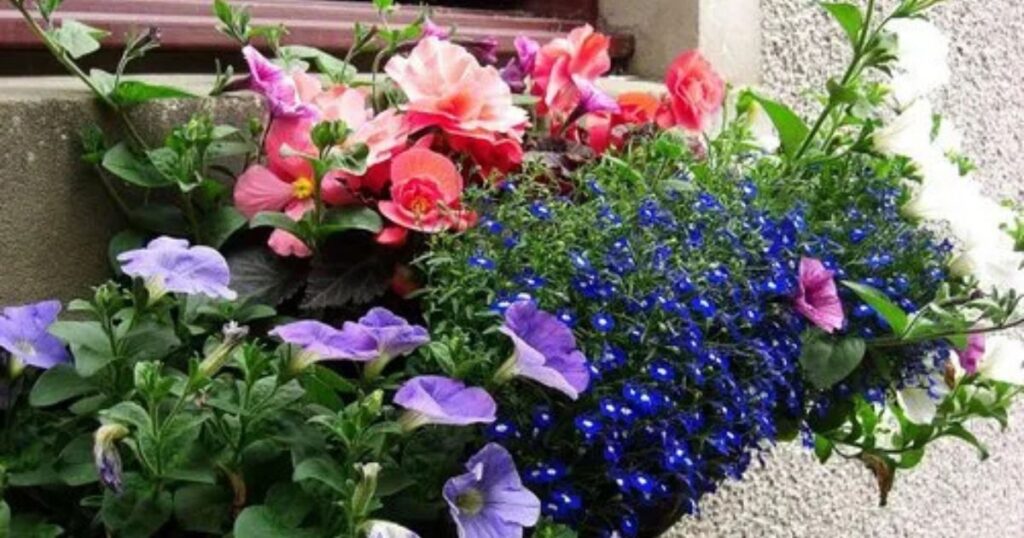 Creating stunning window box displays is an art that combines color, texture, and style to brighten any space. Start by selecting vibrant flowers and plants that thrive in your climate and complement your home’s aesthetic. Mix trailing vines with upright blooms to add depth and movement. Incorporate various leaf shapes and shades of green to create contrast. Use quality soil and ensure proper drainage to keep plants healthy and flourishing. Regular watering and feeding maintain their vibrant look throughout the season.
Creating stunning window box displays is an art that combines color, texture, and style to brighten any space. Start by selecting vibrant flowers and plants that thrive in your climate and complement your home’s aesthetic. Mix trailing vines with upright blooms to add depth and movement. Incorporate various leaf shapes and shades of green to create contrast. Use quality soil and ensure proper drainage to keep plants healthy and flourishing. Regular watering and feeding maintain their vibrant look throughout the season.
Personalize your display with decorative elements, such as small figurines or colorful pots. Whether traditional or modern, well-planned window boxes enhance curb appeal, add charm, and bring nature closer to your everyday life, turning ordinary windows into eye-catching garden planter boxes for windows showcases.
Use the Thriller, Filler, Spiller Formula
The Thriller, Filler, Spiller formula is a popular planting strategy for creating vibrant, balanced garden containers and window boxes. It involves three types of plants: Thrillers, Fillers, and Spillers. Thrillers are the focal point—tall, dramatic plants that draw the eye. Fillers provide volume and color around the thriller, filling in the space with lush foliage or blooms. Spillers cascade gracefully over the container edges, softening the look and adding movement. Using this formula ensures your container window box with plants garden has height, fullness, and flow, making it visually appealing from every angle.
Choose Complementary Colors
Choosing complementary colors is a powerful way to create visually striking and balanced designs. Complementary colors are pairs located opposite each other on the color wheel, such as blue and orange or red and green. When used together, they enhance each other’s intensity, making elements stand out and grab attention.
This contrast can add vibrancy and energy to your project, whether it’s for art, fashion, interior design, or branding. To use complementary colors effectively, balance is key—too much contrast can overwhelm, so consider using one color as dominant and the other as an window box plants accent.
Pay Attention to Texture
Mix broad-leaved plants with delicate or grassy ones. Add interest with foliage like dusty miller or ornamental best flowers for a window box cabbage.
Caring for Your Window Box Flowers
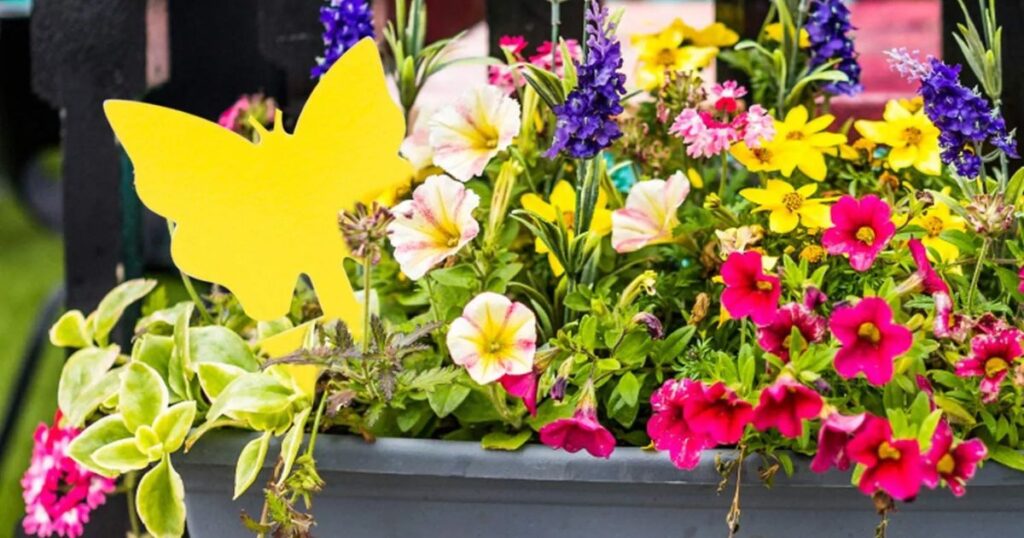 Caring for your window box flowers ensures vibrant, healthy blooms that brighten your home’s exterior. Begin with high-quality soil and select flowers that are well-suited to your climate and sunlight conditions. Water regularly, keeping the soil consistently moist but not waterlogged. Fertilize every few weeks with a balanced, water-soluble fertilizer to support growth and flowering. Deadhead spent blooms to encourage new flowers and prevent disease. Keep an eye out for pests and treat promptly with natural or mild solutions.
Caring for your window box flowers ensures vibrant, healthy blooms that brighten your home’s exterior. Begin with high-quality soil and select flowers that are well-suited to your climate and sunlight conditions. Water regularly, keeping the soil consistently moist but not waterlogged. Fertilize every few weeks with a balanced, water-soluble fertilizer to support growth and flowering. Deadhead spent blooms to encourage new flowers and prevent disease. Keep an eye out for pests and treat promptly with natural or mild solutions.
During hot weather, provide shade or extra watering to avoid stress. Regularly trim and maintain your plants to keep the arrangement tidy and full. With a bit of attention, your window box flowers will thrive beautifully throughout the entire season, adding color and charm to any space.
Water Regularly
Water your plants regularly to keep them healthy and thriving. Consistent watering ensures that the soil remains moist, providing the essential hydration that allows roots to absorb nutrients effectively. Avoid letting the soil dry out completely, as this can stress plants and stunt their growth. However, be cautious not to overwater, as this can lead to root rot and other issues. The frequency of watering depends on the type of plant, climate, and soil conditions. For most plants, watering deeply once or twice a week is better than shallow, frequent watering, as it encourages strong root development.
Fertilize Weekly
Fertilizing your plants weekly is a key practice to keep them healthy and thriving. Regular feeding provides essential nutrients that support vigorous growth, vibrant blooms, and strong roots. By applying fertilizer every week, you replenish the soil with vital elements, such as nitrogen, phosphorus, and potassium, which plants use for energy, growth, and disease resistance. Weekly fertilizing is especially beneficial for fast-growing plants, flowering species, and container gardens where nutrients can quickly deplete. However, it’s essential to use the correct type and amount of fertilizer to prevent overfeeding, which can harm plants or lead to nutrient imbalances.
Deadhead and Prune
Deadheading and pruning are essential gardening techniques that promote healthy plant growth and extend blooming periods. Deadheading involves removing spent or faded flowers to encourage the plant to produce new blooms instead of seed formation. This simple step keeps plants looking neat and vibrant. Pruning, on the other hand, is the careful cutting back of branches, stems, or leaves to shape the plant, improve air circulation, and remove damaged or diseased parts. Regular pruning helps prevent overcrowding and stimulates stronger, more vigorous growth.
Rotate Plants by Season
Use pansies in early spring, switch to heat-lovers by summer, and then transition to mums or ornamental kale for fall.
Window Box Ideas for Different Conditions
Creating vibrant window boxes tailored to various conditions can transform any space with color and life. For sunny spots, choose heat- and drought-tolerant plants such as petunias, geraniums, and succulents that thrive in bright, direct sunlight. In shady areas, opt for shade-loving plants such as ferns, begonias, and impatiens to add lush greenery and soft blooms. For windy or exposed locations, sturdy plants like ornamental grasses, lavender, and thyme withstand harsh conditions while adding texture and fragrance.
Consider the soil type and moisture levels as well, selecting drought-resistant or moisture-loving plants accordingly. Mixing trailing plants with upright varieties creates depth and movement, making window boxes attractive in any environment. With thoughtful plant choices, window boxes can brighten every window regardless of light or weather challenges.
For Full Sun
- Petunias
- Calibrachoa
- Geraniums
- Marigolds
- Verbena
For Shade
- Impatiens
- Begonias
- Fuchsia
- Coleus
- Ferns
For Edible Boxes
- Nasturtiums
- Chives
- Thyme
- Oregano
- Mini tomatoes (with support)
For Fragrance
- Sweet alyssum
- Lavender (in deep boxes)
- Dianthus
- Lemon-scented geraniums
Window Box Tips by Season
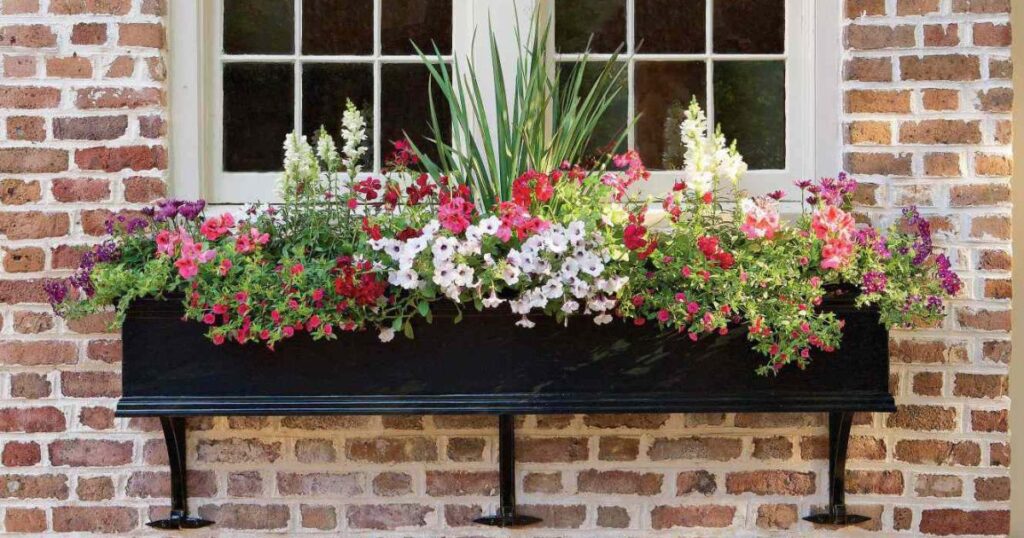 Window Box Tips by Seasons offers practical advice to keep your window boxes vibrant and healthy year-round. In the spring, focus on planting bright, early-blooming flowers, such as pansies and primroses, to welcome the new season. Summer calls for heat-tolerant flowers, such as petunias and geraniums, combined with trailing vines for a lush, vibrant look. For fall, switch to mums, ornamental kale, and rich foliage to add warm tones and texture.
Window Box Tips by Seasons offers practical advice to keep your window boxes vibrant and healthy year-round. In the spring, focus on planting bright, early-blooming flowers, such as pansies and primroses, to welcome the new season. Summer calls for heat-tolerant flowers, such as petunias and geraniums, combined with trailing vines for a lush, vibrant look. For fall, switch to mums, ornamental kale, and rich foliage to add warm tones and texture.
In winter, opt for evergreens, holly, and seasonal accents like pinecones and berries to create festive charm. Regular watering, feeding, and deadheading tailored to each season ensure your window boxes thrive and bring color and life to your home throughout the year.
Spring
- Use cool-season favorites like pansies, violas, and snapdragons.
- Mix in tulip or daffodil bulbs for a surprise bloom.
Summer
- Go bold with sun-loving petunias, calibrachoa, and geraniums.
- Water daily and pinch back for fullness.
Fall
- Swap in ornamental kale, mums, pansies, and grasses.
- Add mini pumpkins or gourds for festive flair.
Winter
- Use evergreens, holly, or twigs, such as red dogwood.
- Add seasonal decorations or lights for a cozy look.
Conclusion:
Selecting the ideal flowers for window boxes can transform any space into a vibrant and cheerful haven. Bright blooms not only add color and charm but also bring life and personality to your home’s exterior or interior. Whether you prefer classic petunias, cheerful marigolds, elegant geraniums, or fragrant begonias, selecting flowers that thrive in your local climate and suit your window’s sunlight will ensure lasting beauty.
Remember to consider bloom time, care needs, and color combinations for a stunning, cohesive display. With the proper selection and care, your window boxes will shine throughout the seasons, offering a joyful and welcoming sight. Embrace the joy of gardening and let your bright blooms brighten your view and your day every time you look outside.
FAQ:
What are the Best Flowers for Window Boxes?
Some of the best flowers for window boxes include petunias, geraniums, begonias, calibrachoa, pansies, and lobelia. These flowers are vibrant, easy to grow, and thrive well in the limited space of window boxes.
Which Flowers Bloom Brightest in Window Boxes?
Petunias and calibrachoa offer bright, colorful blooms that genuinely stand out. Geraniums also produce bold red, pink, or white flowers, while pansies provide vivid colors and patterns perfect for adding eye-catching brightness.
How do I Choose Flowers that will thrive in a Window box?
Consider the amount of sunlight your window receives. For sunny spots, choose sun-loving flowers like petunias, geraniums, and marigolds. For shady areas, impatiens, begonias, and fuchsias are excellent choices.
How often should I Water Flowers in Window Boxes?
Window box flowers typically need watering every 1-2 days during hot weather, as the soil can dry out quickly. Always check the soil moisture and water when the top inch feels dry.
Can I mix Different Flowers in one Window Box?
Absolutely! Combining flowers with different heights, colors, and bloom times can create a lively and dynamic display. Just be sure they have similar sunlight and water requirements.







